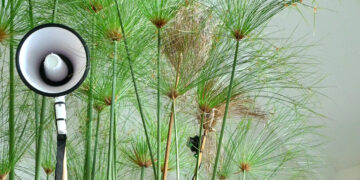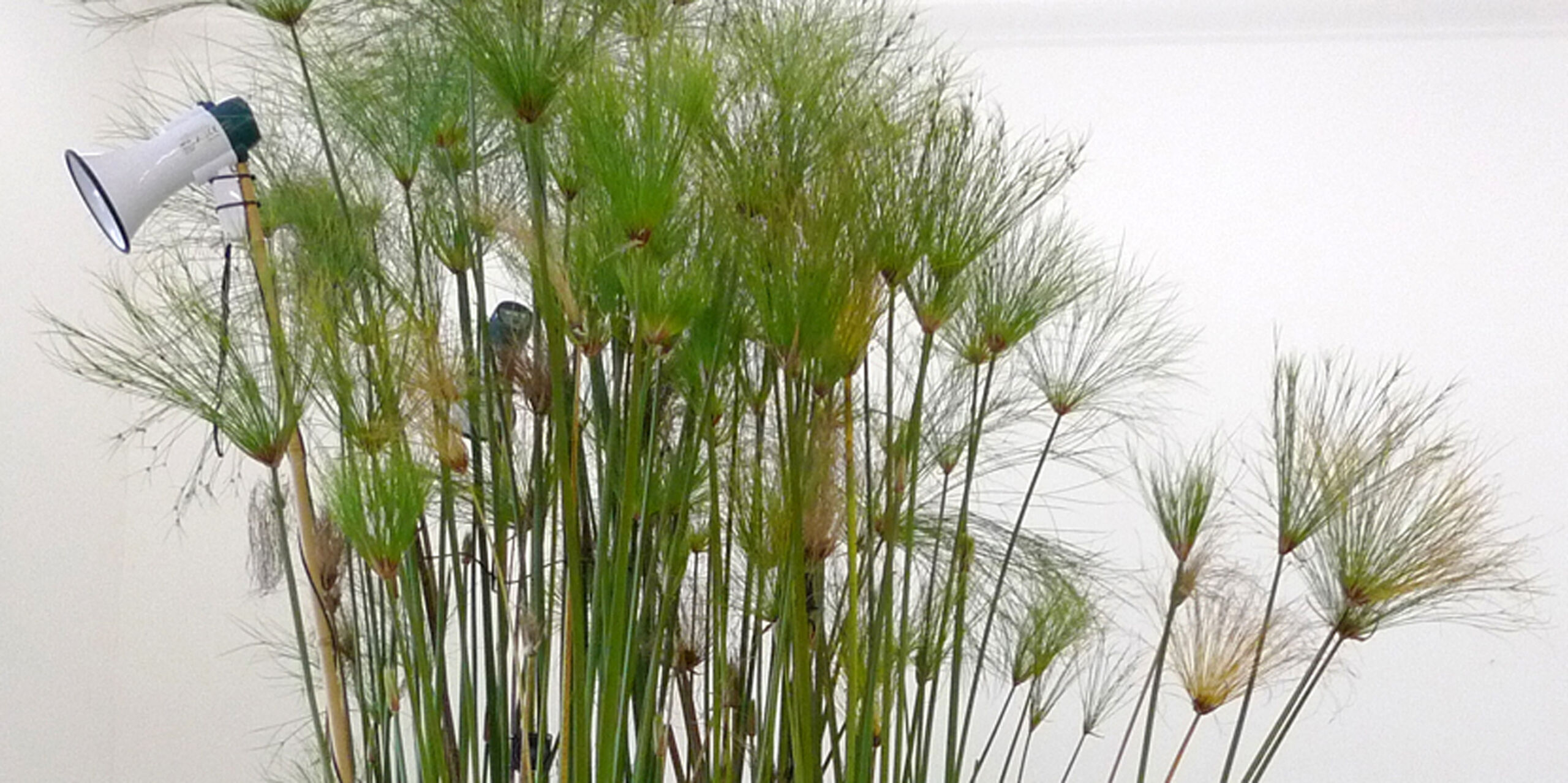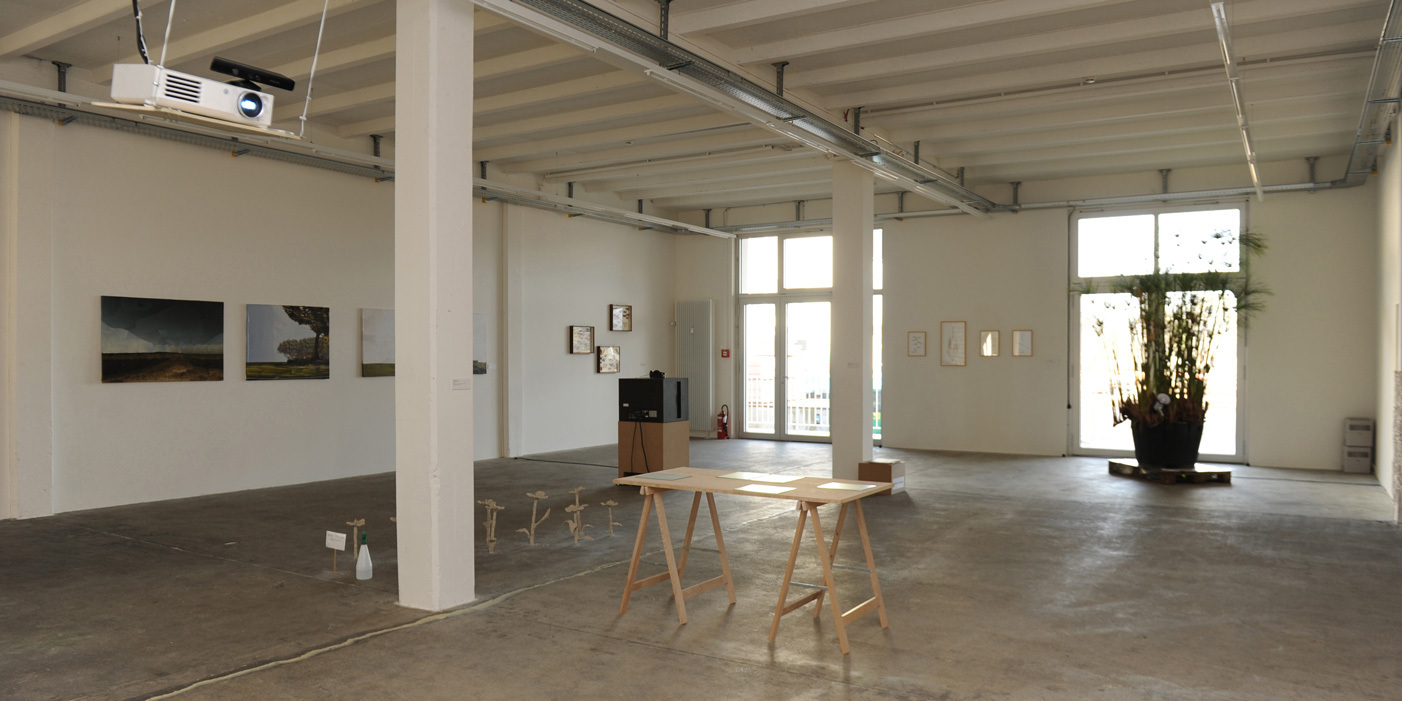Aline Veillat
Sada El-Kawn

A ceiling-high papyrus plant is festooned with numerous loudspeakers and megaphones, through which a buzz of Arabic poems, revolutionary songs, muezzin calls to prayer or the twittering of birds can be heard.
In her installation Sada el-Kawn, or Das Murren der Welt (The Murmur of the World), Aline Veillat, whose works are at the interface of science and art, ties together two different starting points: the voices of the Arab Spring of 2011 and a biological hypothesis of Prof. Dr. Edgar Wagner (from Albert Ludwig University, Freiburg im Breisgau). Wagner postulates that plants react via electrical signals to external threats such as parasite infestations and can therefore take counteractive measures to protect themselves. The acoustic fragments reveal grievances and lead to an attempt to redress them. This crossing of an admittedly unproven biological communications strategy and a far-reaching political development that was mainly organized through social networks raises the issue of parallels and mutual impacts between natural and digital processes, whose connection remains unclear.
(Text: Bettina Back)
Acquired with BAK (Bundesamt für Kultur, Bern) funds as part of the research project Digitale Medienkunst am Oberrhein, 2012. On permanent loan from kulturelles.bl. Inv. No. S0010.




